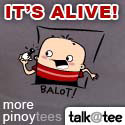Senior High School Contextualized Subject: Practical Research 2
Practical Research 2 is one of the contextualized subjects of the senior high school curriculum. Some examples of the things that you will learn from taking this subject include:
- Nature of Inquiry and Research
- the importance of quantitative research across fields
- the characteristics, strengths, weaknesses, and kinds of quantitative research
- the nature of variables
- Identifying the Inquiry and Stating the Problem
- the range of research topics in the area of inquiry
- the value of research in the area of interest
- the specificity and feasibility of the problem posed
- Learning from Others and Reviewing the Literature
- the criteria in selecting, citing, and synthesizing related literature
- ethical standards in writing related literature
- the formulation of conceptual framework
- the research hypotheses (if appropriate)
- the definition of terms as used in the study
- Understanding Data and Ways to Systematically Collect Data
- qualitative research designs
- the description of sample
- instrument development
- description of intervention (if applicable)
- data collection and analysis procedures (survey, interview, and observation)
- guidelines in writing research methodology
- the application of art / design fundamentals for execution
- Finding Answers through Data Collection
- data collection procedures and skills using varied instruments
- data processing, organizing, and analysis
- Reporting and Sharing the Findings
- guidelines in making conclusions and recommendations
- techniques in listing references
- the process of report writing
- selection criteria and process of best design
While studying, you will also be asked to demonstrate what you have learned by participating in class activities that may include the following:
- Designing a research useful in daily life
- Writing a research title
- Describing background of research
- Stating research questions
- Indicating scope and delimitation of study
- Citing benefits and beneficiaries of study
- Presenting written statement of the problem
- Selecting relevant literature
- Citing related literature using standard style (APA, MLA or Chicago Manual of Style)
- Synthesizing information from relevant literature
- Writing coherent review of literature
- Illustrating and explain conceptual framework
- Listing research hypotheses (if appropriate)
- Describing sampling procedure and the sample
- Constructing an instrument and establishes its validity and reliability
- Planning data collection procedure
- Planning data analysis using statistics and hypothesis testing (if appropriate)
- Implementing design principles to produce creative artwork
- Using statistical techniques to analyze data
- Studying of differences and relationships limited for bivariate analysis
- Drawing conclusions from research findings
- Presenting and interprets data in tabular and graphical forms
These examples only cover the scope of the contextualized subjects. For the scope of the core and specialized subjects, please refer to their respective lists.





